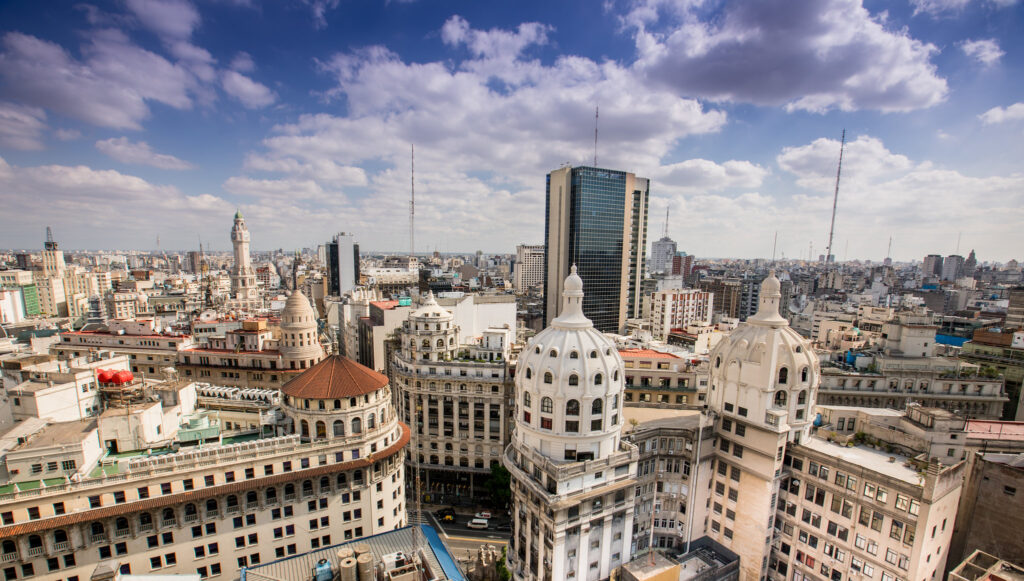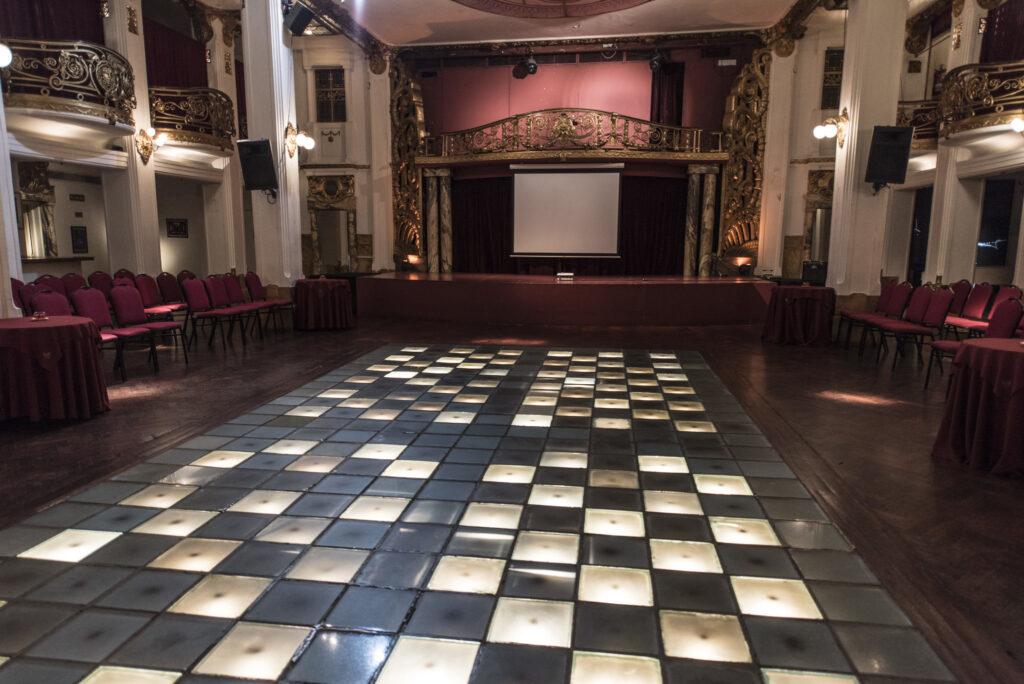Very close to Plaza de Mayo, in the heart of the City of Buenos Aires, is the majestic Güemes Gallery. Opened in 1915, its architecture is the most faithful testimony of the beautiful era of Buenos Aires, when the city intended to imitate the style and urban design of Europe as much as possible.
More than 100 years later, the Güemes Gallery continues to open its doors to Argentines, foreigners and travelers who wish to visit it. In addition to commercial stores and a tango hall, it offers an incredible viewpoint from which you can get those postcards of Buenos Aires that you want so much for your social networks.
Güemes Gallery (Buenos Aires): Everything You Need to Know Before Your Visit
What is the Güemes Gallery?
The Mirador Güemes Gallery, located in Buenos Aires, is one of the city’s most iconic galleries. It was one of the first skyscrapers in Buenos Aires, standing at 87 meters tall. The gallery was designed in the style of grand European spaces, serving as a hub for social gatherings, shopping, and events, much like the predecessors of modern shopping malls.
The gallery was inaugurated in 2015 and initially housed offices, shops, event halls, a restaurant, a theater, and luxury apartments for rent. The building’s architecture, featuring European style and a distinct Art Nouveau influence from the 14th century, remains impeccably preserved to this day.
Today, the Mirador Güemes Gallery offers a variety of commercial stores, making it an ideal place for shopping and finding unique gifts. It also includes office spaces and a section with restaurants and cafés for the public.
The Mirador of the Gallery
One of the main attractions of the Güemes Gallery is its fantastic mirador. Once one of the tallest buildings in the city, the 14th-floor mirador still provides a breathtaking panoramic view of Buenos Aires. From this vantage point, you can see iconic buildings, classic domes, the Río de la Plata, and even the coast of Uruguay on clear days.
The mirador was closed for several years due to necessary restoration work but has since reopened. It can be visited in small groups from Monday to Friday, between 10:00 AM and 1:00 PM, and from 2:00 PM to 4:40 PM. The mirador is closed on rainy days and public holidays, and there is a modest entrance fee.
Unique Features of the Gallery
- Theater and Event Hall: The gallery’s basement houses a theater and an important event hall and restaurant.
- Pneumatic Tube System: The building featured a pneumatic tube system used as an internal mail system.
- Architectural Challenges: The construction of the building faced several challenges, including financial difficulties related to World War I, such as the sinking of a ship carrying Italian marble and other expensive materials by a German submarine.
- Modern Installations: The gallery was equipped with state-of-the-art features for its time, including elevators, fire safety systems, heating and cooling systems in various sections, and a lighted panel displaying office occupancy.

Where is the Güemes Gallery?
The Mirador Güemes Gallery is located in the San Nicolás neighborhood of Buenos Aires, specifically at Florida Street 165, with an additional entrance at San Martín Street 170.
Situated just three blocks from Plaza de Mayo, it’s in the heart of Argentina’s political and governmental activity. Around Plaza de Mayo, you’ll find important government buildings such as the Casa Rosada and the Ministry of Economy.
The gallery is also close to other significant landmarks, including the Cabildo of Buenos Aires, the Metropolitan Cathedral, and the historic center of the city, which extends to the San Telmo neighborhood. To the south of the gallery are the neighborhoods of San Telmo and Monserrat, while Puerto Madero lies to the east, the National Congress to the west, and the neighborhoods of Retiro and Recoleta to the north.
How to get to the Güemes Gallery?
The Mirador Güemes Gallery is open Monday to Friday from 8:00 AM to 8:00 PM and on Saturdays from 9:00 AM to 3:00 PM. It is closed on Sundays and public holidays.
Reaching the gallery is relatively easy due to its central location and excellent integration into Buenos Aires’ transportation system. The most convenient way to get there is by subway. Plaza de Mayo is a hub for several subway lines, including lines A, D, and E. The B line also runs nearby along Avenida Corrientes, and the C line operates on Avenida 9 de Julio. This option avoids traffic congestion and drops you off just meters from the gallery.
Buses are another convenient option, with numerous lines serving the San Nicolás neighborhood. Some of the bus lines that stop near the gallery include 6, 7, 8, 24, 28, 29, 33, 50, 56, 86, 105, 126, 140, 146, and 180.
Driving to the gallery can be challenging due to vehicle restrictions in the downtown area. It’s best to avoid using a private car unless visiting on a Saturday, when restrictions are lighter.

Why visit the Güemes Gallery?
Explore a Unique Shopping Experience
The Güemes Gallery offers a range of shops specializing in various products, from fashion to chocolates, tobacco, and accessories. As you browse, you’ll also be able to admire the stunning architecture of the building, which has been well-preserved for over a century.
Visit the Mirador
The gallery’s mirador provides an incredible view of Buenos Aires. At 87 meters high on the 14th floor, it’s the perfect spot to take unforgettable photos and capture a panoramic view of the city. Remember to check the mirador’s operating hours as they differ from the gallery’s.
Enjoy a Show at Teatro Astor Piazzolla
The Teatro Astor Piazzolla, located within the gallery, offers an unforgettable experience in the heart of Buenos Aires. You can enjoy a tango show paired with a dinner that includes appetizers, main courses, and desserts featuring the flavors of Buenos Aires.
The theater, with its Belle Époque opera-style design, has been carefully restored to provide perfect acoustics and a spectacular setting for live musicians, dancers, and top-quality singers.


